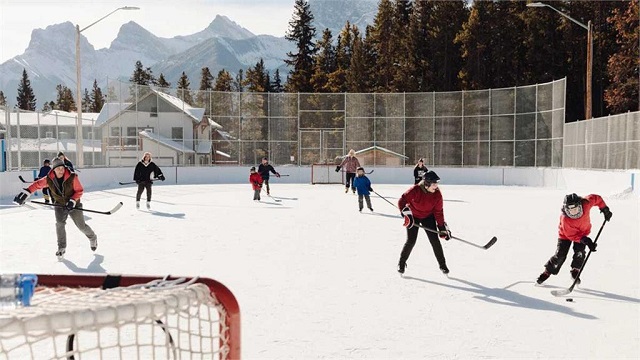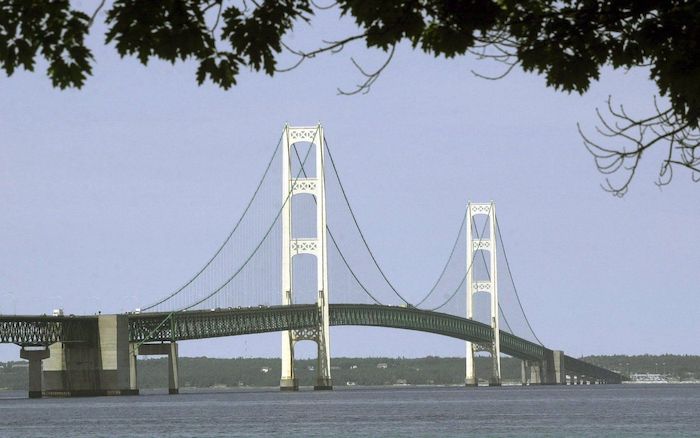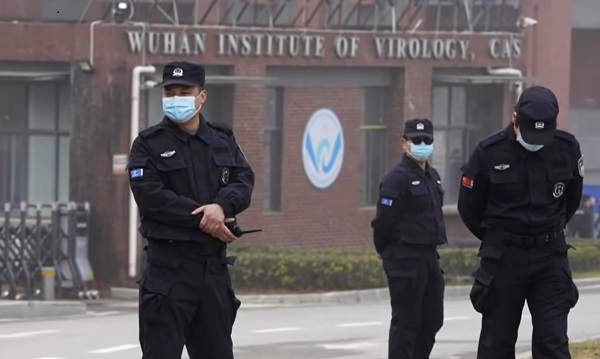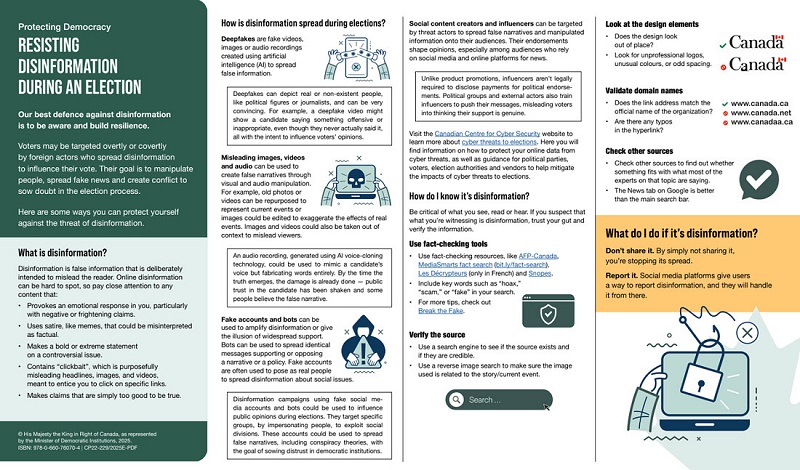Alberta
Alberta Budget 2024 – Communities, Resource Development, Natural disasters, and Policing,

Budget 2024: Investing in safe, welcoming communities
Budget 2024 is a responsible plan that keeps Alberta communities safe and secure.
Budget 2024 protects the environment and safeguards communities and the economy from challenges like wildfires, floods and drought.
“We have a responsible plan that will help protect Albertans and their communities from situations like natural disasters. Ensuring Alberta can continue on its path of growth and prosperity was at top of mind developing Budget 2024.”
Budget 2024 highlights – responsible resource management
Last summer’s wildfires, floods and drought conditions affected many parts of Alberta. Budget 2024 protects Albertans and their communities through major investments in wildfire prevention and firefighting services, flood and drought mitigation projects. This includes:
- $251 million in capital funding over three years for flood and drought mitigation projects to protect Albertans, properties and businesses.
- $539 million in capital funding over three years for municipal and regional water and wastewater projects, including the Water for Life strategy.
- $151 million in additional operating dollars over the next three years to improve Alberta’s wildfire response readiness, enhance night operations, support volunteer and community wildfire response programs, provide additional airtanker support and provide additional resources to fight wildfires.
- $55 million in capital funding over three years to upgrade or purchase new wildfire fighting equipment and facilities.
- $19 million to create a modern, 21st century water strategy to increase water availability through water storage projects, conservation, data systems and stronger water policies.
- $418 million in capital funding over three years for infrastructure projects to manage water, including:
- $262 million for irrigation projects to support farmers and agriculture producers.
- $147 million for water infrastructure projects to ensure necessary irrigation water supply throughout the province.
- $10 million for feasibility studies to explore options for water storage in the Waterton, Belly and St. Mary basins, and Ardley.
“We are preparing for the 2024 wildfire season by investing in prevention, response and mitigation programming. These investments will directly equip Alberta’s wildland firefighters with the tools they need to help keep Albertans and their communities safe.”
“We are making critical investments to protect, conserve and maximize water in Alberta. These measures will help keep communities safe during emergencies while keeping families in their homes and businesses open during droughts and floods.”
“As we face what may be another tough year for Alberta’s agriculture industry, Budget 2024 is looking to the future to see where new water projects are possible while ensuring our existing infrastructure continues to be well-maintained to provide water security for Albertans.”
Budget 2024 highlights – community safety
Albertans deserve to feel safe in their communities, whether they are at their homes, studying at school or commuting to work. Budget 2024 helps promote a safe environment so Albertans feel secure, welcomed and valued through:
- $49 million in capital funding over three years to better support first responders and sheriffs by providing them with the equipment and facilities they need to protect Albertans.
- $10 million in 2024-25 to support 100 police officers deployed to high-crime areas in Calgary and Edmonton through the Safe Streets Action Plan.
- $8 million in community-based grants to continue addressing crime prevention, community safety and hate crimes.
- $85 million in operating expense to the Prevention of Family and Sexual Violence program, an increase of $5 million from the 2023-24 budget, to support victims and women at risk of assault.
Alberta’s government is also working closely with municipalities, Indigenous leaders and first responders so vulnerable people have access to shelter and housing, health care and recovery-oriented services.
“Albertans have a right to feel safe working and living in their communities, and this budget makes sure we can put the right resources in place to ensure public safety across this province. Additional investments to improve public safety – including supports for police and investments to strengthen Alberta’s response during a disaster – will help meet urgent needs while we lay the groundwork to deliver other public safety priorities over the next three years.”
Budget 2024 is a responsible plan to strengthen health care and education, build safe and supportive communities, manage the province’s resources wisely and promote job creation to continue to build Alberta’s competitive advantage.
Alberta
Made in Alberta! Province makes it easier to support local products with Buy Local program

Show your Alberta side. Buy Local. |
When the going gets tough, Albertans stick together. That’s why Alberta’s government is launching a new campaign to benefit hard-working Albertans.
Global uncertainty is threatening the livelihoods of hard-working Alberta farmers, ranchers, processors and their families. The ‘Buy Local’ campaign, recently launched by Alberta’s government, encourages consumers to eat, drink and buy local to show our unified support for the province’s agriculture and food industry.
The government’s ‘Buy Local’ campaign encourages consumers to buy products from Alberta’s hard-working farmers, ranchers and food processors that produce safe, nutritious food for Albertans, Canadians and the world.
“It’s time to let these hard-working Albertans know we have their back. Now, more than ever, we need to shop local and buy made-in-Alberta products. The next time you are grocery shopping or go out for dinner or a drink with your friends or family, support local to demonstrate your Alberta pride. We are pleased tariffs don’t impact the ag industry right now and will keep advocating for our ag industry.”
Alberta’s government supports consumer choice. We are providing tools to help folks easily identify Alberta- and Canadian-made foods and products. Choosing local products keeps Albertans’ hard-earned dollars in our province. Whether it is farm-fresh vegetables, potatoes, honey, craft beer, frozen food or our world-renowned beef, Alberta has an abundance of fresh foods produced right on our doorstep.
Quick facts
- This summer, Albertans can support local at more than 150 farmers’ markets across the province and meet the folks who make, bake and grow our food.
- In March 2023, the Alberta government launched the ‘Made in Alberta’ voluntary food and beverage labelling program to support local agriculture and food sectors.
- Through direct connections with processors, the program has created the momentum to continue expanding consumer awareness about the ‘Made in Alberta’ label to help shoppers quickly identify foods and beverages produced in our province.
- Made in Alberta product catalogue website
Related information
Alberta
Province to expand services provided by Alberta Sheriffs: New policing option for municipalities

Expanding municipal police service options |
Proposed amendments would help ensure Alberta’s evolving public safety needs are met while also giving municipalities more options for local policing.
As first announced with the introduction of the Public Safety Statutes Amendment Act, 2024, Alberta’s government is considering creating a new independent agency police service to assume the police-like duties currently performed by Alberta Sheriffs. If passed, Bill 49 would lay additional groundwork for the new police service.
Proposed amendments to the Police Act recognize the unique challenges faced by different communities and seek to empower local governments to adopt strategies that effectively respond to their specific safety concerns, enhancing overall public safety across the province.
If passed, Bill 49 would specify that the new agency would be a Crown corporation with an independent board of directors to oversee its day-to-day operations. The new agency would be operationally independent from the government, consistent with all police services in Alberta. Unlike the Alberta Sheriffs, officers in the new police service would be directly employed by the police service rather than by the government.
“With this bill, we are taking the necessary steps to address the unique public safety concerns in communities across Alberta. As we work towards creating an independent agency police service, we are providing an essential component of Alberta’s police framework for years to come. Our aim is for the new agency is to ensure that Albertans are safe in their communities and receive the best possible service when they need it most.”
Additional amendments would allow municipalities to select the new agency as their local police service once it becomes fully operational and the necessary standards, capacity and frameworks are in place. Alberta’s government is committed to ensuring the new agency works collaboratively with all police services to meet the province’s evolving public safety needs and improve law enforcement response times, particularly in rural communities. While the RCMP would remain the official provincial police service, municipalities would have a new option for their local policing needs.
Once established, the agency would strengthen Alberta’s existing policing model and complement the province’s current police services, which include the RCMP, Indigenous police services and municipal police. It would help fill gaps and ensure law enforcement resources are deployed efficiently across the province.
Related information
-

 Daily Caller2 days ago
Daily Caller2 days agoTrump Executive Orders ensure ‘Beautiful Clean’ Affordable Coal will continue to bolster US energy grid
-

 2025 Federal Election2 days ago
2025 Federal Election2 days agoBREAKING from THE BUREAU: Pro-Beijing Group That Pushed Erin O’Toole’s Exit Warns Chinese Canadians to “Vote Carefully”
-

 Business2 days ago
Business2 days agoChina, Mexico, Canada Flagged in $1.4 Billion Fentanyl Trade by U.S. Financial Watchdog
-

 COVID-191 day ago
COVID-191 day agoTamara Lich and Chris Barber trial update: The Longest Mischief Trial of All Time continues..
-

 Energy1 day ago
Energy1 day agoStraits of Mackinac Tunnel for Line 5 Pipeline to get “accelerated review”: US Army Corps of Engineers
-

 2025 Federal Election1 day ago
2025 Federal Election1 day agoAllegations of ethical misconduct by the Prime Minister and Government of Canada during the current federal election campaign
-

 Daily Caller24 hours ago
Daily Caller24 hours agoDaily Caller EXCLUSIVE: Trump’s Broad Ban On Risky Gain-Of-Function Research Nears Completion
-

 Daily Caller2 days ago
Daily Caller2 days agoDOJ Releases Dossier Of Deported Maryland Man’s Alleged MS-13 Gang Ties





